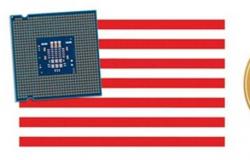Book Review - Chip War: The Fight for the World's Most Critical Technology

Chip War: The Fight for the World’s Most Critical Technology by Chris Miller. New York: Scribner, an imprint of Simon & Schuster, 2022. 464 pp., $30.00 hardcover 9781982172008, $20 paperback 9781982172015
In the wake of the COVID-19 pandemic, with major shifts in global supply chains and amid simmering geopolitical tensions between the United States and China, Chris Miller’s Chip War provides a detailed historical analysis of the semiconductor industry that is as timely as it is captivating. According to Miller, what began as an investigation into the shortcomings of Soviet microelectronic innovation during the Cold War arms race would evolve into an examination of the most consequential geopolitical race of the present era: the race for control over the global semiconductor industry.
It may come as a shock that the semiconductor, or microchip, has become the world’s most sought-after commodity. In recent decades, it has become an integral component in the world’s most popular and essential products. As predicted by Moore’s Law, exponential advances in integrated circuit technology have made chips indispensable in everything from high-end luxury products to common household appliances and much in between. Nearly all electronic goods now require chips, from smartphones to computers, microwaves to washing machines, cars to airplanes, and medical devices to manufacturing equipment. Key digital infrastructure such as telecom, banking, social media, webmail, and even global stock exchanges have likewise become reliant on these microscopic silicon wafers.
 Beyond their vast commercial applications, governments and militaries have also become increasingly focused on securing a dependable supply of chips, as warfare becomes ever more “informationized” and “intelligentized.” Militaries with the ability to harness the power of microchips to produce more 1s and 0s will amass considerable strategic advantages, including more accurate weapons, more sophisticated sonar and satellite systems, better predictive maintenance capabilities, and more agile autonomous vehicles. Given their widespread consumer, military, and strategic importance, chips are “the new oil” in geopolitics. To emphasize this point, Miller points out that “China now spends more money each year importing chips than it spends on oil” (p. XVIII). Miller concludes his introduction with the provocative assertion that “semiconductors have defined the world we live in, determining the shape of international politics, the structure of the world economy, and the balance of military power” (p. XXVII).
Beyond their vast commercial applications, governments and militaries have also become increasingly focused on securing a dependable supply of chips, as warfare becomes ever more “informationized” and “intelligentized.” Militaries with the ability to harness the power of microchips to produce more 1s and 0s will amass considerable strategic advantages, including more accurate weapons, more sophisticated sonar and satellite systems, better predictive maintenance capabilities, and more agile autonomous vehicles. Given their widespread consumer, military, and strategic importance, chips are “the new oil” in geopolitics. To emphasize this point, Miller points out that “China now spends more money each year importing chips than it spends on oil” (p. XVIII). Miller concludes his introduction with the provocative assertion that “semiconductors have defined the world we live in, determining the shape of international politics, the structure of the world economy, and the balance of military power” (p. XXVII).
In its subsequent 54 chapters, Chip War makes a compelling case that this thesis is not an exaggeration. The book both starts and ends in the context of the great power microchip rivalry between the United States and China where Taiwan’s sovereignty continues to be a major flashpoint, not merely for moral or ideological reasons, but for national security, given that Taiwan generates “37 percent of [the world’s] computing power each year” (p. 341). In between these bookends, Miller’s account peels back the various layers of the global microchip industry and its transformations over time to explain how Taiwan Semiconductor Manufacturing Company (TSMC) has become a linchpin in global microchip supply chains.
Having established the stakes, the rest of Miller’s account unfolds in the aftermath of World War II with the origins of the semiconductor industry in the aptly named Silicon Valley, where high consumer demand motivated American firms such as Fairchild Semiconductor, Texas Instruments, AMD, and Intel to take an early lead in designing and producing microchips. Next, Miller's account travels to Zelenograd, where the Soviet Union attempted to reverse engineer its own version of Silicon Valley in the 1960s. This “copy it” strategy would render the USSR as perpetually second-rate compared to American chip fabrication. Miller’s interwoven account also makes a stop in Western Europe, as European firms entered the microchip market around this time. However, European chipmakers never posed a serious threat to Silicon Valley’s chokehold on the industry, save for one pivotal stage in the production process known as extreme ultraviolet lithography (EUV). EUV allows sophisticated chip designs to be etched into silicon at nanoscopic sizes. A single machine can cost as much as $300 million, and today the Dutch Company ASML builds “100 percent of the world’s extreme ultraviolet lithography machines” (p. XXV).
The next evolution in the microchip industry would come from Asia, as Miller depicts the rise of high-tech producers such as Sony and Samsung in Japan, South Korea, Hong Kong, Singapore, and Taiwan in the final decades of the twentieth century. For a time, it even appeared as though Japan would eclipse the United States as the pre-eminent semiconductor superpower, though economic crisis and stagnation in Japan throughout most of the 1990s would curtail these aspirations. Conversely, the American chip industry experienced a resurgence thanks to its adaptability, involving “scrappy startups and … wrenching corporate transformations” (p.117). In the final sections of the book, Miller examines the “China Challenge” whereby China, under the leadership of Xi Jinping, has focused on “gaining breakthroughs in core technology as quickly as possible.” (p. 248). Miller refers to this as a “Sputnik moment” for China’s chip ambitions. The Trump administration dealt a series of debilitating setbacks to China’s semiconductor industry by placing export controls to China on all microchip products made in the United States, and by coaxing similar commitments from geopolitical allies. Though the United States has temporarily disrupted China’s emerging microchip ecosystem, U.S. restrictions have also “catalyzed a new wave of government support for Chinese chipmakers” (p. 320).
In the final chapter of Chip War, Miller returns to the “Taiwan Dilemma,” where he theorizes different scenarios in which a China-Taiwan confrontation might occur, concluding that a disaster in Taiwan could “well be more costly than the COVID pandemic” where the economic losses “would be measured in the trillions” (p. 341). The critical significance of Taiwan’s chip industry is an ongoing theme throughout the book. In chapter 29, titled “We Want a Semiconductor Industry in Taiwan,” Miller recounts the birth of Taiwanese microchip giant TSMC, led by former Texas Instruments executive Morris Chang, who was offered by Taiwanese Minister K.T. Li in the 1980s a “blank check to build Taiwan’s chip industry” (p. 167). This complex interplay between governments and private market actors is another major theme of the book. For many microchip firms, government support and protection has been instrumental in building and maintaining their industry positions. However, as the Soviet Union demonstrated, central planning alone did not provide sufficient consumer demand and market incentivization to keep pace with the exponential growth in innovation observed by Moore’s Law.
Chip War may be the most authoritative book on the geopolitics of the microchip industry to date. Miller covers immense ground while depicting the ebb and flow of the industry across time, from its humble beginnings in Silicon Valley to its present situation of “weaponized interdependence” increasingly concentrated near the Taiwan Strait. Not only is it a valuable contribution for scholars and policymakers, but it is written in a thrilling style that will also appeal to non-specialist audiences. By the book’s end, Miller makes a persuasive case that these microscopic chips, a hundredth the size of a mitochondria, have fundamentally shaped the world that we live in and will continue to do so for a long time to come.
Matthew Rochat is a PhD candidate in political science at the University of California Santa Barbara and a Graduate Fellow with the Orfalea Center for Global and International Studies.


